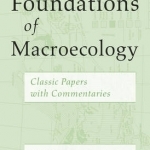Foundations of Macroecology
BookThis item doesn’t have any media yet
2014 | Science & Mathematics
Macroecology is an approach to science that emphasizes the description and explanation of patterns and processes at large spatial and temporal scales. Some scientists liken it to seeing the forest through the trees, giving the proverbial phrase an ecological twist. The term itself was first introduced to the modern literature by James H. Brown and Brian A. Maurer, and it is Brown's classic study Macroecology that is credited with inspiring the broad-scale subfield of ecology. But as with all subfields, many modern-day elements of macroecology are implicit in earlier works dating back decades, even centuries. Foundations of Macroecology charts the evolutionary trajectory of these concepts - from the species-area relationship and the latitudinal gradient of species richness to the relationship between body size and metabolic rate - through forty-six landmark papers originally published between 1920 and 1998.
Divided into two parts - "Macroecology before Macroecology" - and "Dimensions of Macroecology" - the collection also takes the long view, with each paper accompanied by an original commentary from a contemporary expert in the field that places it in a broader context and explains its foundational role. Providing a solid, coherent assessment of the history, current state, and potential future of the field, Foundations of Macroecology will be an essential text for students and teachers of ecology alike.
Related Items:
| Published by | The University of Chicago Press |
| Edition | Unknown |
| ISBN | 9780226115474 |
| Language | N/A |
Images And Data Courtesy Of: The University of Chicago Press.
This content (including text, images, videos and other media) is published and used in accordance
with Fair Use.
